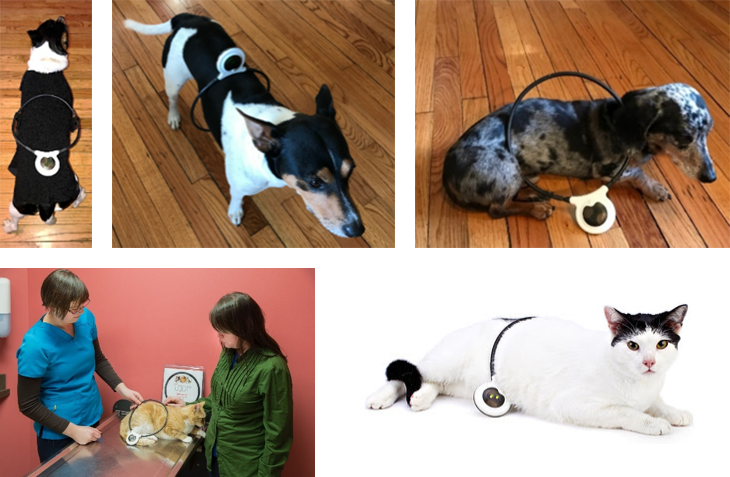Acute renal failure, renal insufficiency, chronic kidney disease.

- A large Assisi Loop should be used to treat the kidneys of the pet.
- The pet can be treated with an Assisi Loop positioned on its back, around its abdomen, or from the side. Positioning of the Assisi Loop on the back or around the abdomen are the preferred positions.
- Position the pet lying down either flat on the ground or up on their elbows. Place the Assisi Loop on the pet’s back, preferably, or side if the back is not an option. Center the Loop about 2 inches behind the last rib. See Pictures
- The Loop can also be placed around the patient if the size of the patient and the size of the Assisi Loop are appropriate for this positioning to be utilized. To place the Loop around the abdomen of the pet, it is usually easier to place the Assisi Loop around the rear feet and slide it up over the hips, making sure the tail goes through the Loop as it is being slid up the rear limbs. The Assisi Loop is slid to a position 2 inches behind the last rib. See Pictures
- CAUTION: Do not force the pet’s shoulders, haunches, or torso through the coil. If they do not slip easily through the coil, place the coil flat against, over, or under animal’s torso, as shown in the related images. Forcing the animal through the coil can be traumatic to the pet and may overly stress the connection of the coil to the circuit board inside the Loop case.
- If the pet will not lie down, an Assisi LOOP-AID can be used. Attach the Assisi Loop with two Velcro straps to maintain the Loop position with the center of the Assisi Loop over the Kidneys. See Picture
- The signal generator should be located in view of the person treating the pet.
- Do not leave the pet unattended when using this placement as small movements can change the positioning of the Loop and the area being treated.
- Turn the unit on by pressing the button on the front of the white rubberized signal generator; green lights will illuminate about once per second.
- Keep the unit in place for the full 15 minutes until the unit shuts off.
- In cases of severe disease use the unit 3-4 times daily, if possible, until clinical signs have resolved. Then treat twice daily until blood work returns to normal or levels off.
- There should be a minimum of 2 hours between treatments for optimal nitric oxide enhancement.

Pet Owner Responsibility. A panel of licensed, experienced veterinarians has developed this Guide. Pet owners should use this protocol only to treat a condition listed above and as directed by a qualified veterinary clinician. Other protocols in this Guide should be used only as directed by a qualified veterinary clinician.
Important: Before starting treatment, please consult product label for optimal product use and safety guidelines. To learn more about the technology, visit our website.
Battery Life: When the lights are blinking 2-3 times per second, the battery is running low and a new Assisi Loop should be purchased. There should be a minimum of 2 hours between treatments for optimal battery efficiency.
